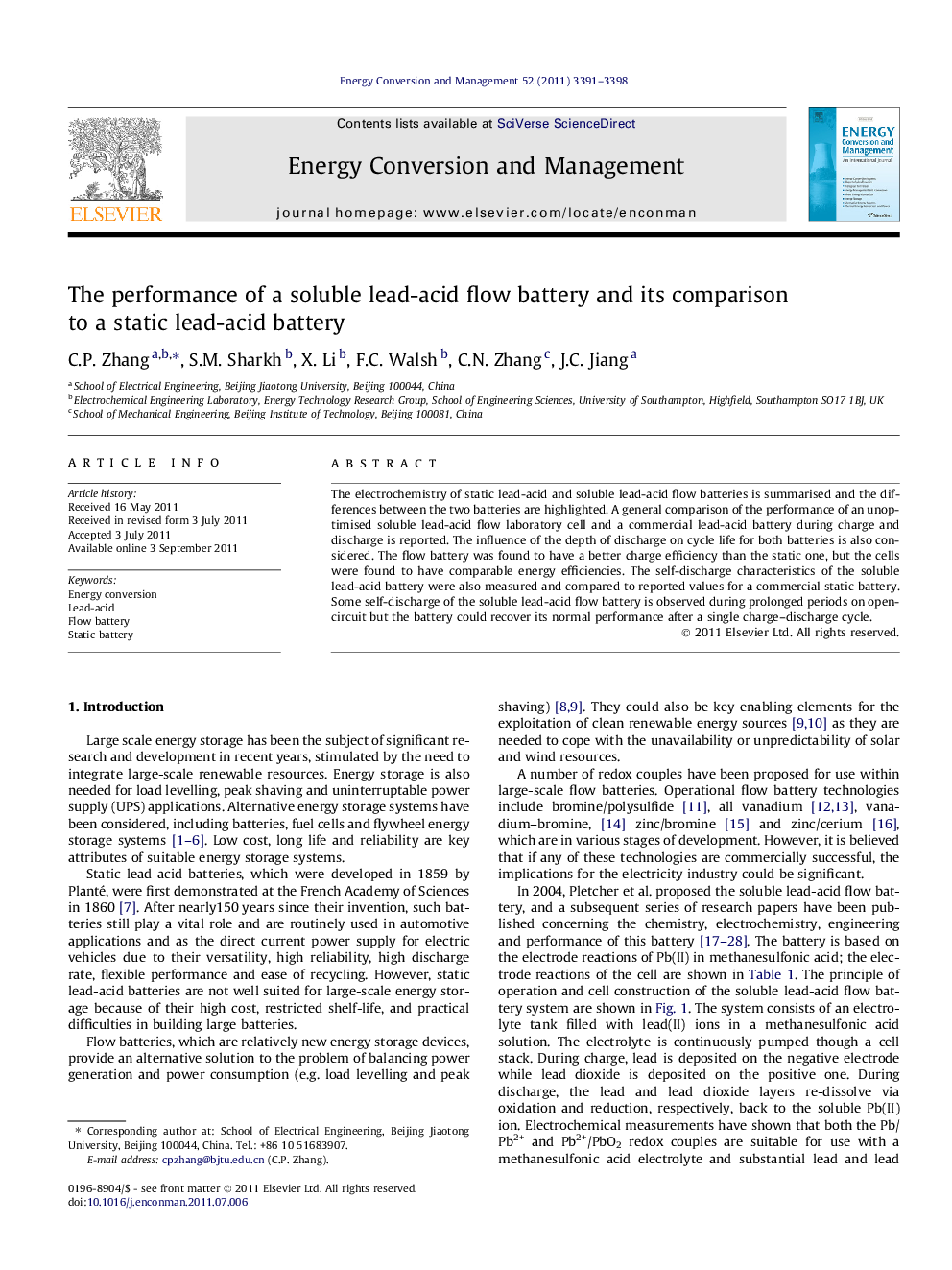| Article ID | Journal | Published Year | Pages | File Type |
|---|---|---|---|---|
| 772274 | Energy Conversion and Management | 2011 | 8 Pages |
The electrochemistry of static lead-acid and soluble lead-acid flow batteries is summarised and the differences between the two batteries are highlighted. A general comparison of the performance of an unoptimised soluble lead-acid flow laboratory cell and a commercial lead-acid battery during charge and discharge is reported. The influence of the depth of discharge on cycle life for both batteries is also considered. The flow battery was found to have a better charge efficiency than the static one, but the cells were found to have comparable energy efficiencies. The self-discharge characteristics of the soluble lead-acid battery were also measured and compared to reported values for a commercial static battery. Some self-discharge of the soluble lead-acid flow battery is observed during prolonged periods on open-circuit but the battery could recover its normal performance after a single charge–discharge cycle.
► We compared the electrochemical characteristics of two types of the batteries. ► SLAFB shows as good performance as SLAB under the same current density. ► The cycle life of two batteries is strongly influenced by the depth of discharge. ► The cycle life of SLAFB can be extended by treatment with hydrogen peroxide.
